When and how to bend raspberries for the winter?
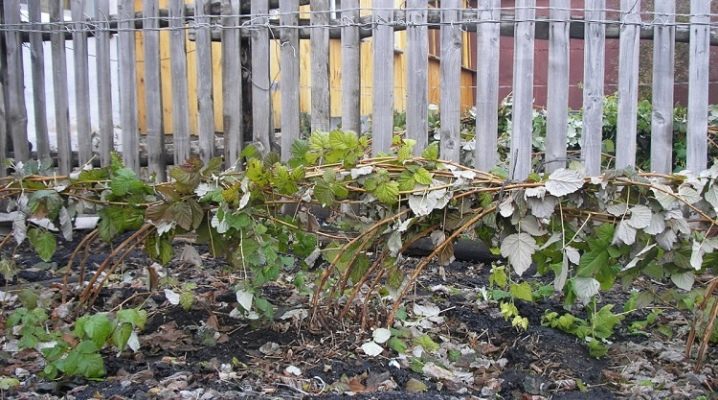
Eating berries is an enjoyable and rewarding experience. To be sure of the quality and safety of the fruit, it is best to grow it yourself. Raspberry is considered one of the most delicious berries. These are fruits of pink, yellow and even black color, thanks to their sweetness and juiciness, everyone loves them - from small to large.
To have good raspberry yields, you need to be able to care for the bushes and properly cover them for the winter. The health of the culture and the quality of its fruiting depend on the method of covering and the method of bending the bushes.


The need for a procedure
Raspberries are an excellent delicacy that can be eaten fresh, prepared delicious compotes, stuffed with dumplings and pies, and frozen in the freezer for the winter. In order to be able to enjoy the berry as long as possible, it is worth creating optimal conditions for the growth and development of the culture. By themselves, raspberry bushes are considered unpretentious, they are easy to care for, but you should be careful when preparing for wintering. Bending the branches of the bush is a necessary procedure for those regions where the temperature can drop to 30-40 ° C frost, and a significant amount of snow does not fall, which is why the culture remains uncovered.
If the weather conditions are mild and there is no high risk of severe frosts, then the raspberries can be left untouched for the winter. The most unfavorable for the growth of shrubs are the northern regions: Siberia, the Urals and some cities in the north-west of Russia. In this area, it is imperative to bend down raspberries for the winter, because the weather can be unpredictable - from mild winters to very harsh, where the cold reaches -45 °, and crops uncovered by soil or snow freeze completely. If the plants are not covered, they may suffer slightly, but the recovery process will take longer, which will significantly affect the quantity and quality of the crop.
In addition to bending the bushes itself, it is important to know how to do this correctly and at what period you need to start the procedure. If you hurry with this event, the bushes may start to squeak, and if you are late, the twigs may freeze slightly. To preserve the raspberries as much as possible, you need to press the bush correctly, without leaving a large gap between the crop and the ground. If the branches are high from the soil, they may not be covered with snow, and they will lose protection from frost. With a low fixation of the plant, there is a risk of freezing of the snow crust above the bushes, which leads to rotting of the plant, since air does not flow to it.
There are risks in carrying out such a procedure, but they are much less significant than the loss of the entire raspberry tree, if measures were not taken to cover the bushes for the winter.


Timing
To protect raspberry bushes from death in winter, you should bend the branches, tilting them as close to the ground as possible. The need for such a procedure is especially great in the northern regions, where cold snap sets in quickly, and frosts reach a serious level. If the bushes grow near buildings and are protected from drafts, then they can not be touched. In regions with mild winters, you can also do without this manipulation.
In Siberia, raspberry bending is carried out in early autumn, since a significant cold snap comes to this region in early October, when it is necessary to work with the culture. It is worth preparing the bushes in August, having laid the necessary nutrients in the ground.Young bushes are recommended to apply organic fertilizers; after the first wintering, it is better to fertilize with mineral compounds. The last time the additives are added is before closing the raspberries for the winter. To protect the crop from pests and diseases, before closing, shoots are sprayed with chemicals, excess branches are cut off, leaves are removed. To make it easier to tilt the branches, the procedure should be done before frost, when the shoots are still flexible.
In the Urals, bending down raspberries is a must, since severe frosts and the absence of a large amount of snow freeze any unprotected crops. To prevent the bushes from freezing, they are covered with hay, spruce branches, spunbond and other materials at hand. The timing of work in the garden varies from the moment the foliage falls to the period when the first night frosts come.
It is best to work in the garden bed from mid to late October. It is necessary to remove the shelter from the moment the snow melted, in March or April it is recommended to tie the branches to the trellis.

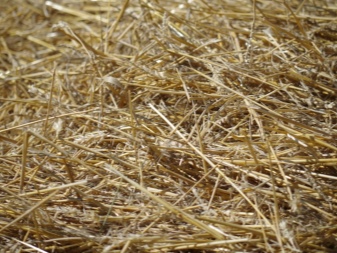
In Transbaikalia, the situation is not much different from the Urals, here it is recommended to start bending raspberries in mid-October, when it gets significantly colder and night frosts begin. To protect the raspberries, they are pressed to the ground with metal brackets and covered with improvised means that will protect the plant from strong wind and frost. In Irkutsk, it is necessary to cook raspberry bushes from the end of September, when the temperature is still above zero, but already quite low. If you are late with bending the plant and carry out the procedure in October, when there is already a little frost outside, the branches will be more fragile, they may break, and the bush will be damaged.
Before sheltering, it is necessary to remove all the leaves from the plant, it is best to do this by hand, passing from the roots to the top of the bush with a hand in a stiff glove. Very important do not pinch the twig tight, otherwise you can damage the buds, from which shoots will form next year. In the Moscow region, winters are less severe, but there can also be severe frosts, therefore it is recommended to cover all the bushes in order to protect them from freezing and get a good harvest next year. It is recommended to start bending the culture in the interval when the temperature drops to + 5-0 degrees, and there is still no frost. The most favorable for work is November. By properly laying the bushes, securing them or covering them, you do not have to worry about the culture freezing.
In Primorye, it is also recommended to bend down raspberry bushes, carrying out this event before the onset of cold weather and after the last harvest. Summer residents who are seriously engaged in their site should closely monitor the weather forecast, monitor the coming frosts and respond to them in a timely manner. Prepared bushes should be pruned, treated with insecticides, fertilized with the necessary additives before being sheltered for the winter. To protect the plants from freezing, it is advisable to sprinkle the soil near the raspberries with sawdust in a layer of 15-20 cm. The timing of sheltering raspberry bushes for the winter can differ significantly, therefore it is important to know the features of the climate of the region and the characteristics of the plant variety itself.
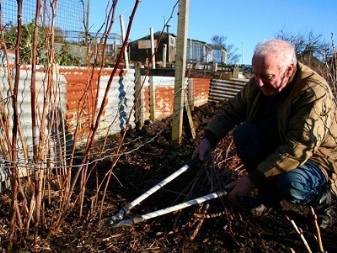
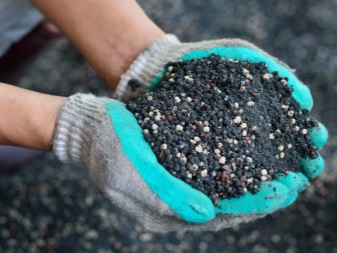
How to bend correctly?
To get a high yield of raspberries after wintering, it is necessary to protect the bushes from frost. In addition to the process of bending the bushes itself, it is important to be able to correctly carry out this procedure, otherwise the efforts will be in vain. There are several ways to conduct this event.
- Cut the bush, treat it with insecticides, remove foliage, bend to the ground and make a structure of wood or other material that will ensure snow retention. Protecting crops with snow is a natural and convenient way for those regions with frequent winter precipitation.
- Prune bushes remove foliage, spray branches, bend to the ground and dig in with earth from the aisle.
- If it is necessary to cover tall bushes, then they are cut off, prepared for wintering, and branches, hay and other natural components are placed on the ground near the bush, which will protect the culture from freezing. The twigs are bent down onto the prepared layer, covered with a board or other available material on top. With the first snow, this structure closes and fully protects the crop.
If the bushes are frost-hardy or grow in climates with mild winters, they may not need to be covered for the winter.
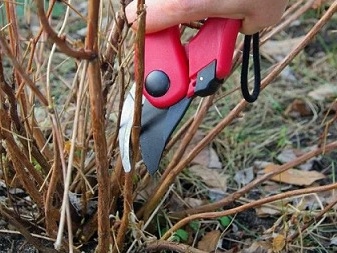
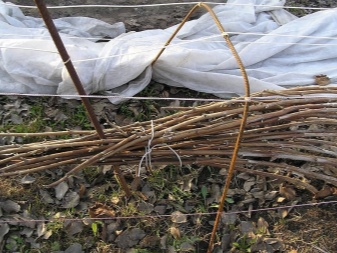
The technology for bending raspberry branches looks like this:
- branches are gathered together and tied with a cord or rope;
- tilt the shoots to the ground in a direction convenient for the plant so as not to break or damage the branches;
- fix the laid branches with wire, a bracket or other fastener, you can use a weight;
- if necessary, lay hay, branches and other materials on and under the bush to provide more complete protection for the bush.
If you properly lay raspberries for the winter, the bushes will be protected, and in the spring they will quickly grow and begin to bear fruit. It is not recommended to close a crop with leaves; it may contain spores of microorganisms and eggs of pests that will spoil the young growth in spring.
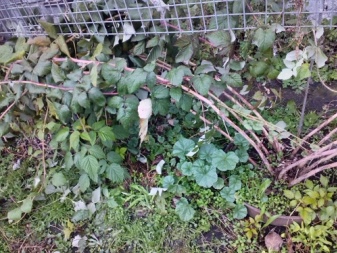
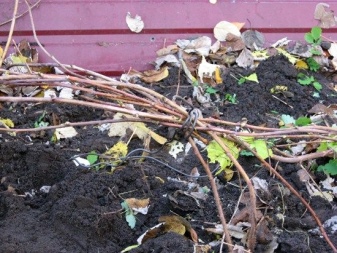













The comment was sent successfully.